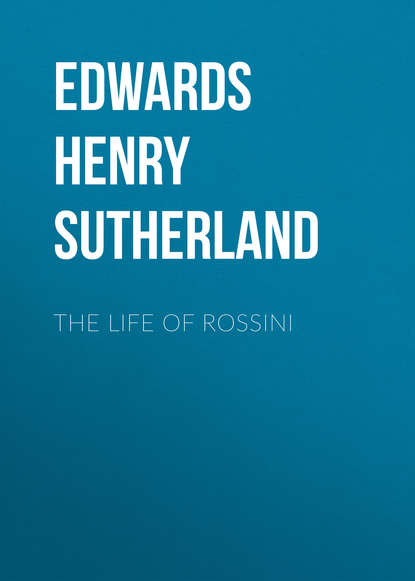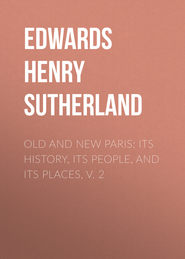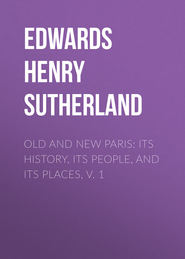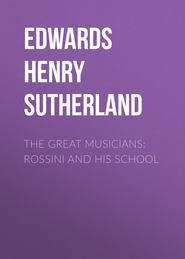По всем вопросам обращайтесь на: info@litportal.ru
(©) 2003-2024.
✖
The Life of Rossini
Настройки чтения
Размер шрифта
Высота строк
Поля
“I must beg of you then to remove from your bills the word new, together with my name as author, and to substitute instead the following: – ‘Opera, consisting of pieces by M. Rossini, arranged by M. Berettoni.’
“I request that this alteration may appear in the bills of to-morrow, in default of which I shall be obliged to ask from justice what I now ask from your good faith.
“Accept my sincere compliments.
“Signed, “Gioachino Rossini.”
The effect of this letter was to cause the entire disappearance of “Un Curioso Accidente,” which was not heard of again. At the one representation which took place a charming trio in the buffo style, for men’s voices, taken from the “Pietra del Paragone,” and a very pretty duet for soprano and contralto from “Aureliano in Palmira,” were remarked.
In addition to the five works already mentioned as having been written by Rossini during the year 1812, “Demetrio e Polibio” may be mentioned as belonging to that year by its production on the stage, if not by its composition.
“Demetrio e Polibio” was Rossini’s first opera. He wrote it in the spring of 1809, when he was just seventeen years of age, but is said to have re-touched it before its representation at Rome in the year 1812.
“Demetrio e Polibio” seems to have been altogether a family affair. The libretto was written by Madame Mombelli. Her husband, Mombelli, a tenor of experience, has the credit of having suggested to Rossini, from among his copious reminiscences, some notions for melodies. The daughters, Marianna and Esther, played two of the principal parts, while the third was taken by the basso, Olivieri, a very intimate friend of the family, of which Rossini himself was a relative.
An officer whom Stendhal met at Como one night when “Demetrio e Polibio” was about to be played, furnished him with this interesting account of the Mombellis, which tallies closely enough with the description of them given some forty years afterwards by Rossini himself to Ferdinand Hiller.
“The company,” he said, “consists of a single family. Of the two daughters, one who is always dressed as a man takes the parts of the musico (or sopranist); that is Marianna. The other one, Esther, who has a voice of greater extent though less even, less perfectly sweet, is the prima donna. In ‘Demetrio e Polibio’ the old Mombelli, who was once a celebrated tenor, takes the part of the King. That of the chief of the conspirators will be filled by a person called Olivieri, who has long been attached to Madame Mombelli, the mother, and who, to be useful to the family, takes utility parts on the stage, and in the house is cook and major domo. Without being pretty, the Mombellis have pleasing faces. But they are ferociously virtuous, and it is supposed that the father, who is an ambitious man, wishes to get them married.”
The year 1813 was a much greater year for Rossini than that of 1812, already sufficiently promising. The latter was the year of “L’Inganno Felice” and “La Pietra del Paragone;” the former that of “Tancredi” and “L’Italiana in Algeri.”
Rossini’s first work of the batch of three brought out in 1813 was a trifle, but owing to peculiar circumstances, a very amusing trifle, called “Il Figlio per Azzardo.” This operetta, or farza, was written for the San Mosè theatre, and was the last work furnished by Rossini to that establishment.
The manager of the San Mosè was annoyed at Rossini’s having engaged to write for another Venetian theatre, the Fenice, and in consequence treated him with great incivility, for which the young composer determined to have his revenge. He had moreover deliberately, and of malice prepense, given Rossini a libretto so monstrously absurd that to make it the groundwork of even a tolerable opera was impossible; yet Rossini was bound by his engagement to set it to music or pay damages. He resolved to set it to music.
If the libretto was absurd, the music which Rossini composed to it was ludicrous, grotesque, extravagant to the last degree of caricature. The bass had to sing at the top of his voice, and only the very lowest notes of the prima donna were called into requisition. One singer, whose appearance was always a signal for laughter, had to deliver a fine-drawn sentimental melody. Another artist who could not sing at all had a very difficult air assigned to him, which, that none of his faults might pass unperceived, was accompanied pianissimo by a pizzicato of violins. In short, it was an anticipation of Offenbach, and it is astonishing that this musical burlesque of Rossini’s has never been reproduced substantially, or by imitation (it is scarcely probable that the original score was preserved), at the Bouffes Parisiens.
Nor must the orchestra be forgotten, which Rossini enriched on this occasion by the introduction of instruments previously unknown. In one movement the musicians, at the beginning of each bar, had to strike the tin shades of the candles in front of them; when the sound extracted from these new “instruments of percussion,” instead of pleasing the public, so irritated it, that the audacious innovator, hissed and hooted by his audience, found it prudent to make his escape from the theatre.
This practical joke in music was one which few composers could have afforded to make; but Rossini had to choose between a bad joke and a bad opera, and he preferred the former.
CHAPTER II
ITALIAN OPERA UNTIL “TANCREDI.”
THE first opera of Rossini’s which became celebrated throughout Europe was “Tancredi,” which in the present day seems just a little old-fashioned. In regard to the recitatives and their accompaniments “Tancredi” is indeed somewhat antiquated. But it was new, strikingly new, in the year 1813, when Mozart’s great operas had scarcely been heard out of Germany, and when, moreover, no one thought of comparing Rossini’s works with any but works by other Italian composers. It was very unlike the serious operas of Rossini’s Italian predecessors, and, in the opinion of many who admired those operas even to prejudice, was full of culpable innovations.
When Rossini began to write for the stage, the lyric drama of Italy was divided by a hard line into the serious and the comic; and comic opera, or rather opera buffa, was, musically speaking, in a much more advanced state of development than opera seria. The dialogue, especially in serious opera, was carried on for interminable periods in recitative. Choruses were rarely introduced; and concerted pieces, though by no means unknown, were still reserved, as a rule, for the conclusion of an act.
The singers were allowed great liberty of adornment, and treated the composer’s melodies as so much musical canvas, to be embroidered upon at will.
The orchestra was in a very subordinate position; the harmony was meagre, the instrumentation mild – many instruments, that were afterwards employed prominently and with great effect by Rossini, being kept in the background or entirely ignored.
Clarinets, for instance, were only admitted into Italian orchestras on condition of being kept quiet; while bassoons were used only to strengthen the basses. Brass instruments, with the exception of horns, were all but proscribed; and some of the brass instruments used by all composers in the present day – opheicleids, for instance, cornets, and all the family of saxhorns – were unknown.
Rossini did not stop, in the way of orchestrations, at “Tancredi;” and the drums and trumpets of the “Gazza Ladra” overture, the military band of “Semiramide,” the sackbuts, psalteries, and all kinds of musical instruments employed in his operas for the French stage, shocked the early admirers of “Tancredi” as much as the innovations, vocal and instrumental, in “Tancredi” had shocked those who cared only for the much simpler works of Paisiello and Cimarosa. Thus we find Stendhal complaining that in “Otello,” “Zelmira,” and above all “Semiramide,” Rossini, in the matter of orchestration, had ceased to be an Italian, and had become a German – which, in the opinion of Stendhal and his Italian friends, was about as severe a thing as could be said.
Lord Mount Edgcumbe in his “Reminiscences of the Opera” gives a fair account of the reforms introduced by Rossini into the operatic music of Italy, which is interesting as proceeding from an old operatic habitué to whom these changes were anything but acceptable. It would be a mistake to suppose that Rossini’s operas encountered formidable opposition anywhere; and in England, as in France, those musicians and amateurs who, here and there, made it their business to decry them, did so with the more energy on account of the immense favour with which they were received by the general public.
“So great a change,” says Lord Mount Edgcumbe, “has taken place in the character of the (operatic) dramas, in the style of the music and its performance, that I cannot help enlarging on that subject before I proceed further. One of the most material alterations is that the grand distinction between serious and comic operas is nearly at an end, the separation of the singers for their performance entirely so.[4 - The serious opera consisted of the following persons: The soprano or primo uomo [homo, but not vir], prima donna (generally a mezzo soprano or contralto) and tenor; the secondo uomo (soprano) seconda donna and ultima parte (bass). The company for the comic opera consisted of the primo buffo (tenor) prima buffa, buffo caricato (bass), seconda buffa and ultima parte (bass). There were also the uomo serio and donna seria, generally the second man or woman of the serious opera.] Not only do the same sing in both, but a new species of drama has arisen, a kind of mongrel between them called semi seria, which bears the same analogy to the other two that that nondescript, melodrama, does to the legitimate drama and comedy of the English.”
Specimens of this “nondescript” style are of course to be found in Shakspeare’s plays and in Mozart’s operas; but let Lord Mount Edgcumbe continue his perfectly intelligible account of Rossini’s reforms.
“The construction of these newly invented pieces,” he proceeds, “is essentially different from the old. The dialogue, which used to be carried on in recitative, and which in Metastasio’s operas is often so beautiful and interesting, is now cut up (and rendered unintelligible if it were worth listening to) into pezzi concertati, or long singing conversations, which present a tedious succession of unconnected, ever-changing motivos having nothing to do with each other: and if a satisfactory air is for a moment introduced which the ear would like to dwell upon, to hear modulated, varied, and again returned to, it is broken off before it is well understood, by a sudden transition into a totally different melody, time and key, and recurs no more; so that no impression can be made or recollection of it preserved. Single songs are almost exploded … even the prima donna, who would formerly have complained at having less than three or four airs allotted to her, is now satisfied with one trifling cavatina for a whole opera.”
Rossini’s concerted pieces and finales described are not precisely a “tedious succession of unconnected, ever-changing motivos;” but from his own point of view Lord Mount Edgcumbe’s account of Rossini’s innovations is true enough.
It seems strange, that in the year 1813, when Rossini produced “Tancredi,” the mere forms of the lyric drama should have still been looked upon as unsettled. For though opera could only boast a history of two centuries – little enough considering the high antiquity of the spoken drama – it had made great progress during the previous hundred years, and was scarcely the same entertainment as that which popes, cardinals, and the most illustrious nobles in Italy had taken under their special protection in the early part of the seventeenth century. No general history of the opera in Europe can well be written, for its progress has been different in each country, and we find continual instances of composers leaving one country to visit and even to settle in another, taking with them their works, and introducing at the same time and naturalising their style. But its development in Italy can be followed, more or less closely, from its origin in a long series of experiments to the time of Scarlatti, and from Scarlatti (1649) in an unbroken line to Rossini.
Indeed, from Scarlatti to the immediate predecessors of Rossini, the history of the development of the opera in Italy is the history of its development at Naples; and Rossini himself, though not educated at Naples, like almost all the other leading composers of Italy, soon betook himself to the great musical capital, and composed for its celebrated theatre all his best Italian operas in the serious style.
Without proposing to imitate those conscientious historians who cannot chronicle the simplest events of their own time without going back to the origin of all things, I may perhaps find it more easy to explain to the unlearned reader what Rossini did in the way of perfecting operatic forms if I previously mark down the steps in advance taken by his predecessors.
The first operas seem to have been little more than spoken dramas interspersed with choruses in the madrigal style. “Dafne,” performed for the first time in the Corsi palace in 1597, passes for the first opera musicale in which recitative was employed.
In “Euridice,” represented publicly at Florence on the occasion of the marriage of Henry IV. of France with Marie de Medicis in 1600, each of the five acts concludes with a chorus, the dialogue is in recitative, and one of the characters, Tircis, sings an air which is introduced by an instrumental prelude. Here, then, in germ, are the overture, the chorus, the air, the recitative of modern opera.
Monteverde (1568 – 1643), who changed the whole harmonic system of his predecessors, gave greater importance in his operas to the accompaniments, increased the number of musicians in the orchestra, and made use of a separate combination of instruments to announce the entry and return of each dramatic personage – an orchestral device which passes in the present day for new.
Scarlatti (1649 – 1745), who studied in Rome under Carissimi, gave new development to the operatic air, and introduced measured recitative. Scarlatti’s operas contain the earliest examples of airs with obbligato solo accompaniments, and this composer must always hold an important place in the history of the opera as the founder of the great Neapolitan school.
Alessandro Scarlatti was followed by Logroscino and Durante;[5 - Durante passed from one Conservatory at Naples to another, and was necessarily professor at all three.] the former of whom introduced concerted pieces and the dramatic finale, which was afterwards developed by Piccinni, and introduced into serious opera by Paisiello; while the latter succeeded his old master, contemporaneously with Leo, as professor at Naples, where Jomelli, Piccinni, Sacchini, Guglielmi, Paisiello, and Cimarosa, were formed under his guidance.
The special innovations of Piccinni and Paisiello have been mentioned. Cimarosa, without inventing or modifying any particular form, wrote the best overtures that the Italian school had yet produced, and was the first to introduce concerted pieces in the midst of dramatic action.
We have seen that Rossini was a pupil of the Bologna Lyceum; but though he was the first great Italian composer who never studied at the Conservatories of Naples, to him fell all the rich inheritance of the Neapolitan school.
CHAPTER III
FOUR HISTORICAL OPERAS
IN bringing forward Monteverde, Scarlatti, Durante, Logroscino, and Pergolese, Jomelli, Piccinni, Paisiello, and Cimarosa, as the founders of opera, one seems to be tracing operatic history merely through names. To opera goers, who do not limit the sphere of their observation to London, it would be simpler to cite four examples of works belonging to the century before Rossini, which, if not living in the full sense of the word, are, at least, capable of revival, and have been presented to the public in their revived state during the last few years.
Pergolese’s “Serva Padrona,” an opera or operetta of the year 1731, was reproduced at Paris in 1862, for the début of Madame Galli-Marié. In this little work, which passed for its composer’s masterpiece, the accompaniments are all for stringed instruments, and as there are only two speaking characters in the drama, it naturally follows that all the musical pieces are of the simplest form. But when “La Serva Padrona” was produced, a composer, however many characters he might have to deal with, was not expected to go in the way of concerted pieces beyond a duet; and it was not until twenty years afterwards that Logroscino ventured upon a trio, and upon the first very simple model of the dramatic finale.
In Gluck’s “Orfeo” we have a well-known specimen of an opera, somewhat later in date, and much more advanced in regard to dramatic form, than the one just named. It must be remembered that “Orfeo” was originally produced in 1764, not in France, but in Italy. In Gluck’s operas we find an abundance of recitative; airs; choruses taking part in the dramatic action; occasionally duets; very rarely concerted pieces, and never finales. Gluck, like his rival Piccinni, but certainly not more than Piccinni, extended the limits of operatic art. If, as is generally admitted, he excelled in his dramatic treatment of chorus and orchestra, he neglected concerted pieces, and was not equal to the handling of those grand dramatic finales which Piccinni was the first to produce, in anything like their modern form, which Paisiello naturalised in serious opera, and which were brought to perfection in both styles by the comprehensive genius of Mozart.
A third opera by a præ-Mozartian composer, which, as it is still occasionally represented, may be cited for the further progress it exhibits in the development of operatic forms, is Cimarosa’s “Matrimonio Segretto.” Before writing this, one of his latest works (1792), its composer had been already completely distanced by Mozart, who adopted all that was worth adopting in the methods of all his contemporaries and predecessors; but to Cimarosa all the same belongs the merit of having introduced quartets and other concerted pieces, not as ornaments at the end of an act, but as integral parts of the musical drama. This important innovation occurs for the first time in Cimarosa’s “Il fanatico per le antichi Romani,” composed in 1773, thirteen years before the production of the “Marriage of Figaro.”
Cimarosa’s “Matrimonio Segretto” is also remarkable in an historical point of view for its overture, the finest that the Italian school had up to that time produced. Paisiello’s overture to the “Frascatana” had previously made a decided mark; but Rossini was the first composer of his nation who wrote a whole series of operatic overtures – “Tancredi,” “Barber of Seville,” “Gazza Ladra,” “Semiramide,” “Siege of Corinth,” “William Tell” – which became celebrated apart from the works to which they are prefixed.
The only opera of Paisiello’s which has been presented in recent times, is his original musical setting of the “Barber of Seville,” written in 1780 for the Court Theatre at St. Petersburgh. This interesting work, which was revived a couple of years ago, and is still occasionally played at one of the half dozen musical theatres in Paris called Les Fantaisies Parisiennes, is anterior to Mozart, more even in character than by date. Produced twenty years before “Il Matrimonio Segretto,” and only six years before the “Marriage of Figaro,” it seems very much further removed from Mozart’s than from Cimarosa’s work. Mozart went so far beyond his contemporaries that he may almost be described as a great anticipator. Like Shakspeare he is much more modern than his immediate successors.
However Paisiello’s “Barbiere” may sometimes be heard, and is therefore better worth speaking of than works of equal or greater importance, which can only be looked at on paper; and it is interesting as marking a stage in the history of opera by the number and merit of its concerted pieces.
The opera, then, was at first nothing but recitative, or recitative and chorus; the chorus having no dramatic character, but confining itself, in imitation of the most ancient models, to solemn criticism and comment. To relieve the drawling recitative or chant, an occasional air was introduced; then more airs; then airs and duets. We have to wait until the middle of the eighteenth century for a simple trio. Then trios, quartets, finales, fully developed finales, occur. In the meantime Gluck had given great prominence to the chorus, and had cultivated choral writing with the happiest dramatic effect; and while operatic forms, especially in regard to the employment of the voices, had been gradually varied and extended by the Italians, the instrumental writers of Germany, more especially Haydn, had invented new orchestral combinations. Mozart appeared; and appropriating all in music that had gone before – joining to all the vocal forms of the Italians all the instrumental forms of the Germans, while improving, developing, and perfecting both – helped dramatic music on to that point at which even now, speaking broadly, it may be said to remain.
CHAPTER IV









